Imagine holding a delicate, rose-shaped mineral forged by nature over millennia. Barite Roses are geological poetry—but how do these intricate structures form, and where can you hunt for them ethically?
Table of Contents
What is a Barite Rose? Understanding Nature’s Mineral Marvel
Have you ever stumbled upon a stone that looks remarkably like a blooming flower? Nature has a way of surprising us with its creations, and the Barite Rose is one of its most stunning mineral marvels. These fascinating formations, also known as Desert Roses, captivate both scientists and collectors alike with their petal-like structures and unique appearance.
Barite Roses are not actually plants but minerals that form in arid, sandy environments through a process that’s been occurring for millions of years. Like an artist carefully crafting a sculpture, nature combines barite (barium sulfate) with sand and water to create these intricate formations that bear an uncanny resemblance to rose blooms.
When I first encountered a Barite Rose during a geological expedition in Oklahoma, I was struck by how something so beautiful could emerge from the harsh desert conditions. It’s as if the desert itself is trying to create beauty despite its reputation for being barren and lifeless.
| Property | Description |
| Scientific Name | Barite Rose or Desert Rose |
| Primary Mineral | Barite (Barium Sulfate) or Gypsum |
| Chemical Formula | BaSO₄ (Barite) or CaSO₄·2H₂O (Gypsum) |
| Crystal System | Orthorhombic (Barite) or Monoclinic (Gypsum) |
| Formation Process | Evaporation in sandy environments |
| Common Locations | Oklahoma, Arizona, Morocco, Tunisia, Saudi Arabia |
| Average Size | 1-12 inches (2.5-30 cm) |
| Hardness (Mohs Scale) | 3-3.5 (Barite) or 2 (Gypsum) |
The Geological Composition of Barite Roses
The magic of Barite Roses lies in their composition. These geological wonders consist primarily of barite (barium sulfate) or, in some cases, gypsum (calcium sulfate dihydrate). The distinction is important because it affects not only the physical properties of the specimen but also where you’re likely to find them.
Think of the composition as a recipe that nature follows. Just as a chef needs specific ingredients to create a culinary masterpiece, the earth requires particular conditions and elements to form these mineral flowers. The primary “ingredients” include:
- Barite (BaSO₄) or Gypsum (CaSO₄·2H₂O)
- Sand particles (usually quartz)
- Water containing dissolved minerals
- Evaporative conditions
Barite itself is a fascinating mineral. With a relatively high specific gravity of 4.5, it’s noticeably heavier than most common minerals—you can feel the difference when holding a specimen. Its crystals form in the orthorhombic system, which allows for the distinctive petal-like arrangements we see in Barite Roses.
How Barite Roses Differ from Other Mineral Formations
What makes Barite Roses truly special is their distinctive appearance and formation process compared to other mineral structures. Unlike geodes that form in hollow cavities or stalactites that grow from cave ceilings, Barite Roses develop in sandy soil through a process of evaporation and crystallization.
You might be wondering, “How can I tell a Barite Rose from other similar-looking minerals?” It’s a question I often hear from budding collectors and enthusiasts. The answer lies in both appearance and physical properties.
Barite Roses have characteristic “petals” or blades that radiate outward, often incorporating sand grains within their structure. This creates a unique texture that’s rough yet organized, unlike the smooth, faceted surfaces of many other crystals. They also tend to be heavier than they look due to barite’s high density a property that can help distinguish them from gypsum desert roses, which are lighter.
| Feature | Barite Rose | Gypsum Rose | Sand Rose | Selenite Rose |
| Primary Mineral | Barite | Gypsum | Gypsum with quartz sand | Selenite (form of gypsum) |
| Weight | Heavy | Light | Medium | Light |
| Hardness | 3-3.5 | 2 | 2 | 2 |
| Petal Structure | Thick, well-defined | Thin, delicate | Grainy, sandy texture | Transparent to translucent |
| Color | Reddish-brown, tan | White, clear, tan | Desert tan, brown | Clear, white, golden |
In contrast to crystalline minerals like quartz or amethyst, which grow systematically along atomic planes, Barite Roses form through a more chaotic process involving sand entrapment. This creates their distinctive appearance that truly resembles a rose in bloom a remarkable coincidence of nature that continues to fascinate geologists worldwide.
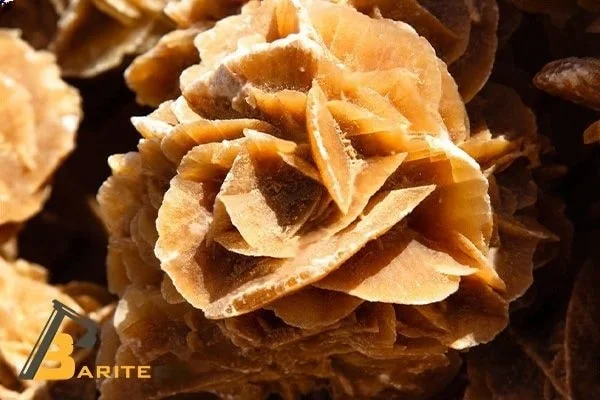
The Formation Process: How Nature Crafts These Delicate Structures
Have you ever wondered how something as beautiful as a Barite Rose comes into existence? The journey from simple minerals to these exquisite formations is nothing short of miraculous. Nature, with its infinite patience, orchestrates a delicate ballet of elements and conditions to create these stone flowers.
I’ve spent countless hours studying these formations, and each time I hold a Barite Rose, I’m reminded of nature’s incredible artistry. Unlike living roses that grow through biological processes, these mineral roses emerge through a purely physical and chemical dance occurring beneath the desert surface.
The formation process resembles a slow-motion sculpture being carved by invisible hands. It begins with mineral-rich water seeping through sandy soil and ends with the emergence of these rose-like structures that can last for millions of years. Let’s explore this fascinating process in detail.
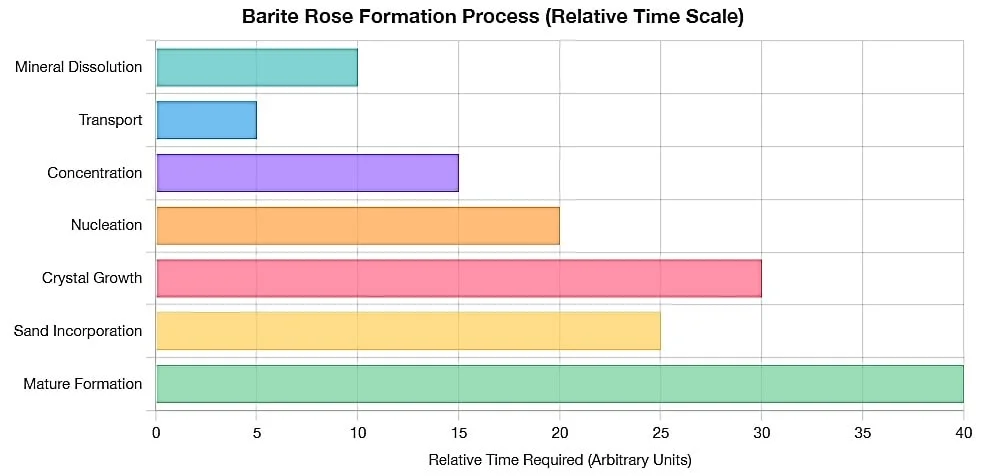
Environmental Conditions Necessary for Barite Rose Formation
Not just any environment can produce these geological wonders. Barite Roses are picky about where they form, requiring a specific set of conditions that rarely occur together. This explains why they’re considered treasures among mineral collectors they simply don’t form everywhere.
Think of it as nature needing the perfect recipe. Just as a master chef requires precisely the right ingredients and cooking conditions, Barite Roses demand specific environmental factors to develop. When these conditions align, magic happens beneath the earth’s surface.
The primary environmental requirements include:
| Environmental Factor | Requirement | Importance |
| Climate | Arid to semi-arid | Critical – Facilitates evaporation cycles |
| Soil Type | Sandy with high silica content | Essential – Provides framework and inclusions |
| Water Presence | Periodic saturation followed by dry periods | Critical – Delivers dissolved minerals |
| Mineral Source | Bedrock rich in barium or underlying barite deposits | Essential – Supplies the primary mineral |
| Temperature Fluctuation | Significant day/night temperature differences | Important – Aids crystallization process |
| pH Level | Slightly acidic to neutral | Helpful – Influences mineral solubility |
| Depth | Near-surface conditions (typically 1-10 feet) | Important – Allows for evaporation influence |
These conditions typically converge in desert or semi-desert regions where periodic rains dissolve minerals from the bedrock, creating mineral-rich solutions that percolate through sandy soils. The most prolific formation areas include the Red River region of Oklahoma, parts of Kansas, North Africa (particularly Tunisia and Algeria), and areas of the Middle East.
What fascinates me most is how these seemingly harsh environments places we often think of as barren produce some of the most beautiful mineral structures on earth. It’s as if the desert is compensating for its lack of biological diversity by creating these mineral “flowers” instead.

The Crystallization Process Explained
The journey from dissolved minerals to a structured Barite Rose involves a sophisticated crystallization process that mineralogists have studied for decades. It’s a bit like watching a time-lapse video of frost forming on a window, except it happens underground and takes considerably longer.
When I explain this process to my geology students, I often compare it to making rock candy. Just as sugar crystals form around a string as sugary water evaporates, barite crystals form around sand grains as mineral-rich water evaporates in the desert soil. But unlike the relatively simple sugar crystals, barite forms complex, radiating structures that resemble rose petals.
Did you know? The distinctive rose-like appearance isn’t accidental. It results from the specific way barite molecules arrange themselves according to their crystal structure. The orthorhombic crystal system of barite naturally forms tabular or blade-like crystals that radiate outward, creating the petal effect.
Role of Water and Evaporation
Water serves as both the delivery vehicle and the catalyst in Barite Rose formation. This process begins when rainwater percolates through rocks containing barium, dissolving it to form a barium-rich solution. This solution then travels through the ground until it encounters sulfate ions, often from dissolved gypsum or other sulfate minerals.
The magic happens during evaporation. As water gradually disappears in the dry desert climate, it leaves behind increasingly concentrated mineral solutions. When these solutions become supersaturated meaning they can no longer hold all their dissolved minerals crystallization begins.
But why do the crystals form in those distinctive rose-like patterns? It comes down to a principle called crystal habit. Under specific conditions, barite naturally forms tabular or blade-like crystals that radiate outward from a central nucleation point often a sand grain. As these crystals grow, they trap sand particles, which become incorporated into the structure, giving Barite Roses their characteristic sandy texture.
Timeframe for Natural Formation
How long does it take for nature to craft these exquisite mineral structures? The answer might surprise you. Unlike human-made art that can be created in hours or days, nature works on a much longer timeline though not nearly as long as many other geological processes.
Based on laboratory simulations and field observations, we can estimate the formation timeframe for Barite Roses. However, it’s important to note that the rate varies significantly depending on environmental conditions.
| Formation Stage | Estimated Timeframe | Influencing Factors |
| Initial Nucleation | Several weeks to months | Mineral concentration, temperature, pH |
| Early Crystal Growth | 1-5 years | Wet/dry cycles, mineral supply, temperature fluctuations |
| Development of Distinctive “Petals” | 5-20 years | Consistency of conditions, uninterrupted growth periods |
| Maturation of Complete Formation | 20-100+ years | Size of formation, stability of environment |
| Color Development | Throughout growth process | Presence of iron oxides and other trace minerals |
I find it humbling to consider that the Barite Rose specimens we admire today began their formation before many of us were born. They represent nature’s patient artistry, with each “petal” developing slowly, molecule by molecule, over decades.
Under exceptionally stable conditions with consistent mineral supply, larger specimens might take centuries to form. Yet this timeframe is still just a blink of an eye in geological terms, where processes often unfold over millions of years. This relatively rapid formation period (geologically speaking) means that Barite Roses provide a unique window into relatively recent environmental conditions in the areas where they’re found.

Historical Significance and Cultural Value
The Barite Rose, with its distinctive petal-like formation, has captivated human imagination for centuries. Beyond their geological significance, these mineral formations have played important roles in various civilizations throughout history, becoming symbols of cultural heritage and spiritual significance in different regions around the world.
Barite Roses in Ancient Civilizations
Archaeological evidence suggests that Barite Roses were collected and cherished by ancient peoples across multiple continents. These natural formations were often considered magical or divine in origin due to their flower-like appearance emerging from stone. Historical records indicate that these mineral formations were incorporated into various aspects of ancient life, from decorative elements to ceremonial objects.
Historical Use of Barite Roses in Ancient Civilizations
| Civilization/Region | Time Period | Primary Uses | Archaeological Evidence |
| Native North American Tribes | 5000 BCE – 1800 CE | Ceremonial objects, Medicine wheels, Burial offerings | Specimens found in burial mounds, ceremonial sites |
| Ancient Egyptian | 3000 BCE – 30 BCE | Amulets, Decorative items, Trade goods | Preserved in tombs, mentioned in hieroglyphic texts |
| Mesopotamian Cultures | 4000 BCE – 539 BCE | Religious artifacts, Royal gifts, Talismans | Cuneiform references, palace excavations |
| Arabian Peninsula Cultures | 2000 BCE – 600 CE | Desert navigation markers, Trade items, Decorative art | Trade route artifacts, settlement excavations |
| Berber Tribes (North Africa) | 1000 BCE – Present | Jewelry, Protective symbols, Household decoration | Continuous cultural use, traditional crafts |
Symbolic Meanings Across Different Cultures
The flower-like appearance of Barite Roses naturally led to rich symbolism across diverse cultural traditions. These meanings often transcended geographical boundaries, with similar interpretations arising independently in distant regions. The symbolism attached to these formations reflects humanity’s tendency to find meaning in natural phenomena, particularly those that mimic familiar organic forms like flowers.
Symbolic Meanings of Barite Roses in Different Cultures
| Culture/Region | Symbolic Meaning | Cultural Context |
| Plains Native Americans | Earth memory, Ancestral connection, Natural harmony | Viewed as messages from ancestors preserved in stone; used in healing ceremonies |
| Middle Eastern Traditions | Desert bloom, Perseverance, Hidden beauty | Symbol of life’s persistence in harsh environments; associated with desert wisdom |
| North African Berber | Protection, Fertility, Prosperity | Placed in homes to ward off evil; given as wedding gifts to ensure family growth |
| European Alchemists | Transformation, Mineral evolution, Natural magic | Studied as evidence of stone’s capacity to “grow” like living organisms |
| Modern Western Culture | Geological beauty, Natural art, Scientific wonder | Collected as specimens representing the artistic capability of natural processes |
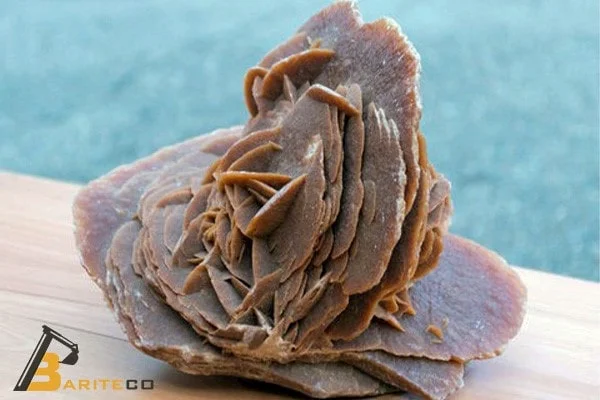
Where to Find Barite Roses: Global Hotspots
Barite Roses, these fascinating mineral formations, are not found universally across the globe but rather occur in specific geological environments. Several regions have gained fame for their exceptional specimens, drawing both scientific researchers and collectors. Understanding these global hotspots provides insight into the specific conditions that foster these natural wonders.
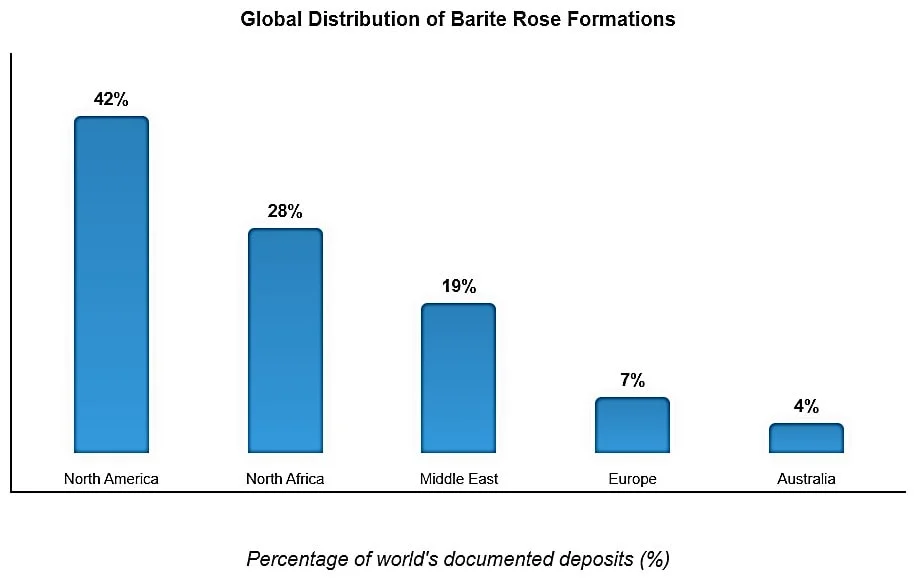
Famous Deposits in Oklahoma and the American Southwest
The United States, particularly Oklahoma and the American Southwest, hosts some of the world’s most renowned Barite Rose deposits. The distinctive red soil formations of these regions provide ideal conditions for the development of these mineral structures. Oklahoma is especially famous for producing what many collectors consider the highest quality specimens, characterized by their rich red coloration and well-defined petal-like formations.
Major Barite Rose Localities in North America
| Location | Specimen Characteristics | Accessibility | Conservation Status |
| Noble County, Oklahoma | Deep red color, 2-5 inch diameter, clear crystalline structure | Private lands, some commercial dig sites | Actively collected, abundant supply |
| Cleveland County, Oklahoma | Rust-red to brown, 1-4 inch diameter, defined “petals” | Some public access areas, permission required | Well-known collecting area, moderate supply |
| Kay County, Oklahoma | Light red to pink, 2-6 inch clusters, sand inclusion common | Mostly private lands | Protected in some areas, limited collection |
| Cochise County, Arizona | Reddish-brown, 1-3 inch diameter, desert varnish common | Some BLM lands, private claims | Moderate abundance, some areas restricted |
| San Juan County, New Mexico | Orange-red to copper, 2-4 inch specimens, high desert patina | Mix of tribal, private, and public lands | Some protected areas, permission often needed |
Notable European and African Locations
While North America hosts abundant deposits, some of the most historically significant and visually distinctive Barite Rose specimens come from Europe and North Africa. The specimens from these regions often differ slightly in coloration and formation pattern from their American counterparts, offering collectors a broader appreciation of how local geology influences these formations. Tunisia and Morocco in particular are renowned for their exceptional desert rose formations.
Key Barite Rose Localities in Europe and Africa
| Country/Region | Specific Locality | Notable Characteristics | Historical Significance |
| Tunisia | Sahara Desert margins, near Tataouine | Large (up to 12 inch) pale tan specimens, sand inclusions | Featured in ancient trade routes, traditional Berber crafts |
| Algeria | Northern Sahara region | Golden-brown color, distinctive crystal clarity | Historical collection by nomadic peoples, traditional medicinal uses |
| Morocco | Atlas Mountain foothills | Rusty orange-brown, complex “blossom” formations | Historically traded along Mediterranean routes, cultural significance |
| Spain | Almería Province | Smaller (1-3 inch) reddish specimens, higher mineral content | Collected since Roman times, featured in regional mineralogy museums |
| Italy | Sicily, near volcanic regions | Dark red to black tint, influenced by volcanic soil | Mentioned in Renaissance naturalist texts, volcanic association |
The Red Beds of Oklahoma
The famous “Red Beds” of Oklahoma represent one of the world’s premier locations for collecting Barite Roses. These distinctive geological formations, dating back to the Permian period approximately 275 million years ago, provide the perfect environmental conditions for the formation of these mineral structures. The deep red coloration comes from the high iron oxide content in the soil, which influences the appearance of the Barite Roses formed within these beds.
Oklahoma’s Red Beds stretch across several counties, with the most productive areas concentrated in the central and north-central regions of the state. The unique combination of mineral-rich groundwater, porous sandstone, and the specific chemical composition of these beds creates ideal conditions for the slow crystallization process necessary for Barite Rose formation. Collectors and geologists recognize these locations as producing specimens with exceptional clarity, defined crystal structure, and the characteristic red hue that makes Oklahoma specimens particularly desirable.
Characteristics of Oklahoma’s Red Beds
| Feature | Description | Impact on Barite Rose Formation |
| Soil Composition | High iron oxide content, sandy clay composition | Provides distinctive red coloration, creates matrix for crystal growth |
| Geological Age | Permian Period (275-250 million years ago) | Allowed sufficient time for slow crystallization processes |
| Climate History | Alternating wet and dry periods, similar to desert conditions | Created necessary evaporation and concentration of minerals |
| Groundwater Characteristics | High mineral content, particularly barium sulfate | Supplied essential chemical components for crystal formation |
| Depth Range | Typically found 3-15 feet below surface | Protected formations from erosion while allowing mineral seepage |
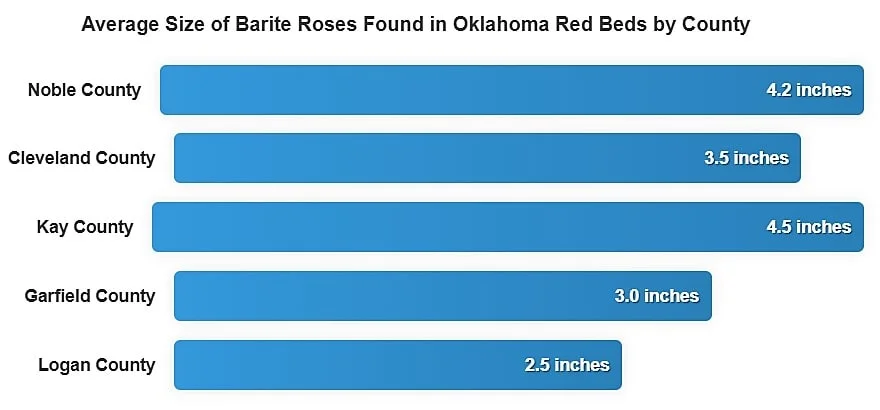
Collecting Barite Roses: A Guide for Enthusiasts
For mineral enthusiasts and amateur geologists, collecting Barite Roses can be a rewarding hobby that combines outdoor exploration with scientific discovery. These distinctive mineral formations, with their petal-like crystal structures, make stunning additions to any collection. However, successful collecting requires knowledge, proper tools, and respect for both natural environments and legal boundaries.
Collector’s Note: Before embarking on any Barite Rose hunting expedition, always research local regulations, obtain necessary permissions, and familiarize yourself with the geological features of your target area. The best collectors combine knowledge with respect for nature.
Ethical Collection Practices
The growing popularity of mineral collecting has raised important considerations about conservation and sustainability. Ethical collection practices ensure that these natural treasures remain available for future generations to discover and enjoy. Responsible collectors follow a set of principles that balance their hobby with environmental stewardship.
Ethical Guidelines for Barite Rose Collection
| Principle | Best Practices | Why It Matters |
| Obtain Proper Permission | Always get landowner permission or permits for public lands before collecting. Never trespass. | Respects property rights, prevents legal issues, and maintains collector access to sites. |
| Take Only What You Need | Collect moderate amounts. Leave specimens for others to find and enjoy. | Preserves resources, maintains site viability, and demonstrates respect for the environment. |
| Minimize Site Impact | Fill in holes, avoid damage to surrounding vegetation, stay on designated paths when possible. | Reduces erosion, protects habitat, and prevents visual degradation of natural areas. |
| Respect Protected Areas | Never collect in national parks, nature preserves, or other protected sites without specific authorization. | Protects rare specimens and significant geological features for scientific study and public enjoyment. |
| Share Knowledge | Document finds, contribute to citizen science, educate others about geological heritage. | Advances understanding, creates community awareness, and promotes conservation values. |
Tools and Techniques for Barite Rose Hunting
Successful Barite Rose collecting requires a combination of the right tools, proper techniques, and knowledge of where to look. While these mineral formations can sometimes be found on the surface, particularly after rainfall in known deposit areas, most collecting involves careful excavation. Having the appropriate equipment not only improves your chances of finding quality specimens but also helps protect the specimens during extraction.
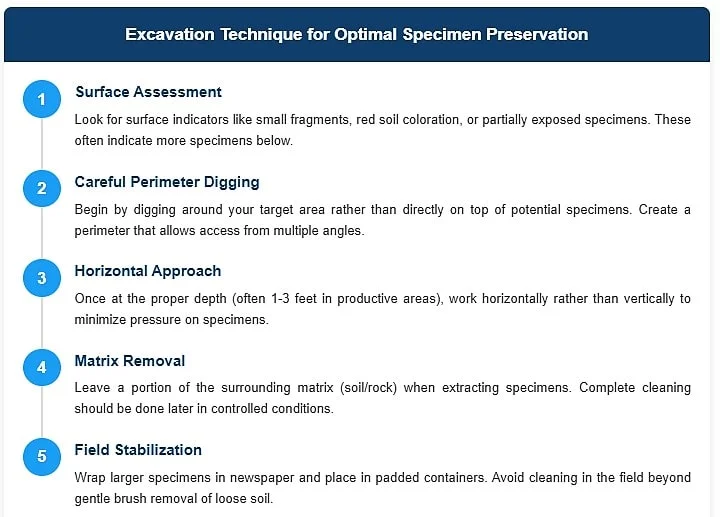
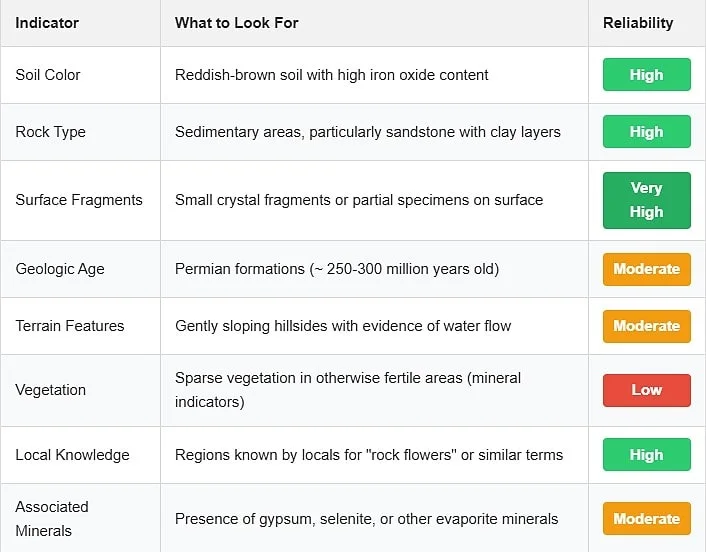
Key Indicators of Potential Barite Rose Locations
Preserving and Displaying Your Barite Rose Collection
After the excitement of discovering and collecting Barite Roses comes the equally important process of preservation and display. These delicate mineral formations require proper handling and care to maintain their unique crystalline structure and aesthetic appeal. With the right techniques, your specimens can remain pristine for generations while being showcased in ways that highlight their natural beauty.
Cleaning Methods That Won’t Damage Specimens
Cleaning Barite Roses requires a delicate touch and an understanding of their physical properties. These formations have a relatively soft mineral composition (barite has a Mohs hardness of 3-3.5) and their distinctive rose-like structure can be easily damaged by aggressive cleaning methods. The goal is to remove soil and debris while preserving the natural crystal formations and surface textures that make each specimen unique.
Important Caution: Never use vinegar, household acids, or commercial limestone/calcium removers on Barite Roses. While these might be suitable for some minerals, they can damage or completely dissolve barite crystals. Similarly, avoid ultrasonic cleaners, which can fracture delicate crystal formations.
Safe Cleaning Methods for Barite Rose Specimens
| Cleaning Method | Suitable For | Technique | Precautions |
| Dry Brushing | Surface dust and loose soil | Use soft paintbrushes of various sizes to gently remove loose particles. Work from top to bottom of specimen. | Use only natural bristle or soft synthetic brushes. Never use wire brushes, which will scratch the surface. |
| Water Rinse | Specimens without cracks or fragile elements | Rinse under gentle, room-temperature running water while supporting the specimen carefully. | Never use hot water. Dry thoroughly afterward using compressed air or allow to air dry completely. |
| Water Soak | Clay or mud-covered specimens | Submerge in distilled water for 1-24 hours to soften adhered clay. Periodically brush gently with soft brush. | Do not soak specimens with fractures as water can penetrate and cause expansion damage when drying. |
| Steam Cleaning | Stubborn clay deposits | Use a handheld steamer held 4-6 inches from specimen to loosen tenacious clay deposits. | Brief exposure only. Extended steam contact can cause thermal stress and fracturing. |
| Hydrogen Peroxide Soak (3%) | Specimens with organic staining | Soak in 3% solution for 1-2 hours, then rinse thoroughly with distilled water. | Test on inconspicuous area first. Extended soaking may lighten natural coloration. |
| Baking Soda Paste | Iron oxide staining | Make paste with baking soda and water, apply to stained areas, let dry, then brush away. | Rub very gently. Abrasive if applied with pressure. |
| Air Abrasion | Professional cleaning of valuable specimens | Precision removal of matrix using microblasting equipment with sodium bicarbonate media. | Requires specialized equipment and expertise. Not recommended for amateur collectors. |
Step-by-Step Cleaning Process for Barite Roses

Creative Display Ideas for Home Collections
Displaying your Barite Rose collection effectively combines elements of art and science. The right presentation not only showcases the beauty of these mineral formations but also protects them from damage while making them accessible for appreciation and study. From simple stands to elaborate custom cabinets, there are numerous ways to highlight your specimens based on your space, budget, and aesthetic preferences.
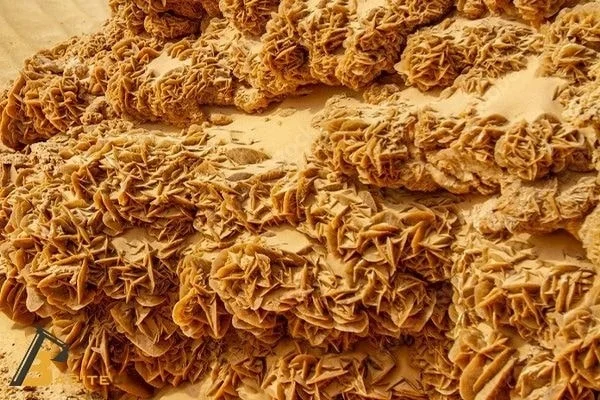
Scientific and Industrial Uses of Barite
Beyond their aesthetic appeal as collector’s items, Barite Roses and barite minerals have significant practical applications across multiple industries. Their unique physical and chemical properties make them valuable resources in fields ranging from energy production to healthcare and scientific research.
Industry Insight: While the ornamental Barite Rose formations themselves are rarely used industrially, the barite mineral (BaSO₄) found in the same deposits is harvested for numerous commercial applications due to its high density, chemical inertness, and radiation-absorbing properties.
Barite’s Role in the Oil and Gas Industry
The oil and gas industry represents the largest consumer of barite worldwide, where it serves as a critical component in drilling operations. Barite’s high density, chemical stability, and low solubility make it ideal for creating drilling muds that facilitate safe and efficient well construction.
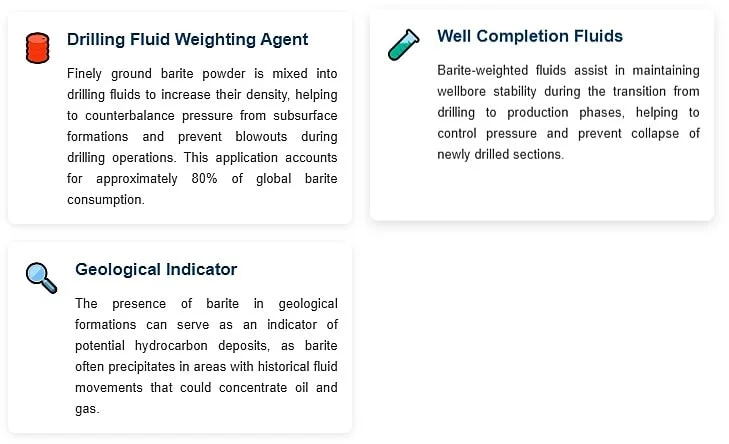
Oil Industry Specifications for Barite
| Property | API Specification | Industry Requirement | Function |
| Specific Gravity | Minimum 4.20 g/cm³ | Higher grades (4.30+ g/cm³) for deep wells | Provides necessary weight to drilling fluid |
| Particle Size | ≥97% passing through 200-mesh screen | Uniform distribution | Ensures suspension in drilling fluids |
| Soluble Alkaline Earth Metals | <250 mg/kg | Lower is better | Prevents drilling fluid contamination |
| Water-Soluble Content | <0.02% | Minimal | Maintains fluid stability |
| Residual Moisture | <1.0% | <0.5% preferred | Ensures accurate weighting calculations |
Medical and Scientific Applications
Barite’s unique physical properties, particularly its opacity to X-rays and radiation absorption capabilities, make it valuable in medical diagnostics, therapeutic applications, and scientific research. The high-purity grades used in these applications differ significantly from industrial barite.
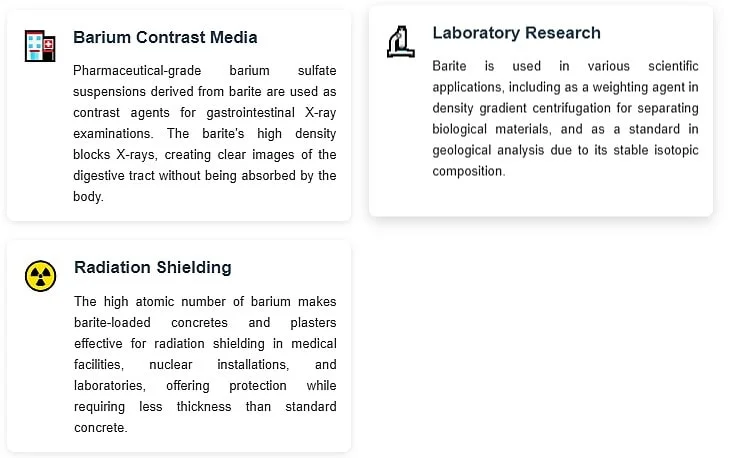
Conclusion
Barite Roses represent one of nature’s most fascinating geological wonders. These mineral formations, emerging from harsh desert environments through a delicate dance of elements and time, remind us of nature’s remarkable artistic capabilities. From the distinctive red specimens of Oklahoma’s ancient beds to the golden formations of North Africa, these “stone flowers” have captivated humans for centuries serving as objects of cultural significance, scientific study, and aesthetic appreciation.
Whether you’re a serious collector venturing into the field with proper tools and ethical practices, a scientist studying their unique crystallization processes, or simply an admirer of natural beauty, Barite Roses offer something truly special. They stand as testament to the extraordinary processes occurring beneath our feet over decades and centuries, creating delicate mineral blooms that connect us to both geological history and cultural heritage.
As we continue to study and appreciate these remarkable formations, we gain deeper insight not just into the specific conditions that create them, but into the broader wonders of our planet’s geological processes. The Barite Rose appearing impossibly flower-like yet formed entirely through natural mineral processes reminds us that the line between art and science is often wonderfully blurred in the natural world.
FAQ
What exactly is a Barite Rose?
A mineral formation of barium sulfate crystals that naturally grow in rose-like patterns, often containing sand and iron oxide that gives them a reddish-brown color.
Are Barite Roses and Desert Roses the same thing?
No, Desert Roses are typically made of gypsum or selenite while Barite Roses consist of barium sulfate, though they share similar rose-like appearances.
How long does it take for a Barite Rose to form?
Barite Roses form over decades to centuries, with larger specimens requiring 100+ years to develop fully.
Where is the best place to find Barite Roses?
Oklahoma’s Red Beds in the United States, parts of Tunisia, Morocco, and Algeria in North Africa are premier locations for finding Barite Roses.
How do I clean a Barite Rose without damaging it?
Use only soft dry brushes for dust removal or gentle room-temperature water rinsing, avoiding all chemicals, hot water, and ultrasonic cleaners.
What makes Oklahoma’s Barite Roses special?
Oklahoma specimens feature distinctive deep red coloration from iron oxide, exceptional crystal definition, and originate from the historically significant Permian-era Red Beds.
Can I legally collect Barite Roses?
Collection legality varies by location—always obtain landowner permission for private property, secure permits for public lands, and never collect from protected areas.
What industrial uses does barite have?
Barite is primarily used as a weighting agent in drilling fluids, in radiation shielding, and as a filler in paints, plastics, and rubber products.
How can I tell the difference between a real Barite Rose and a fake?
Authentic Barite Roses are unusually heavy due to barite’s high density, show natural variations in their “petals,” and contain visible sand inclusions.
What is the cultural significance of Barite Roses?
Various cultures revere these formations as symbols of resilience and natural beauty, with uses ranging from Native American ceremonial objects to North African protective talismans.
What tools do I need to collect Barite Roses?
Essential collection tools include a geological hammer, various chisels, protective eyewear, work gloves, sturdy containers, and GPS for location recording.
Are Barite Roses valuable?
Quality specimens can range from $20 to several hundred dollars based on size, formation quality, and origin, with museum-grade pieces commanding premium prices.
Have you ever found a Barite Rose? Share your discovery in the comments or ask us how to identify authentic specimens!
